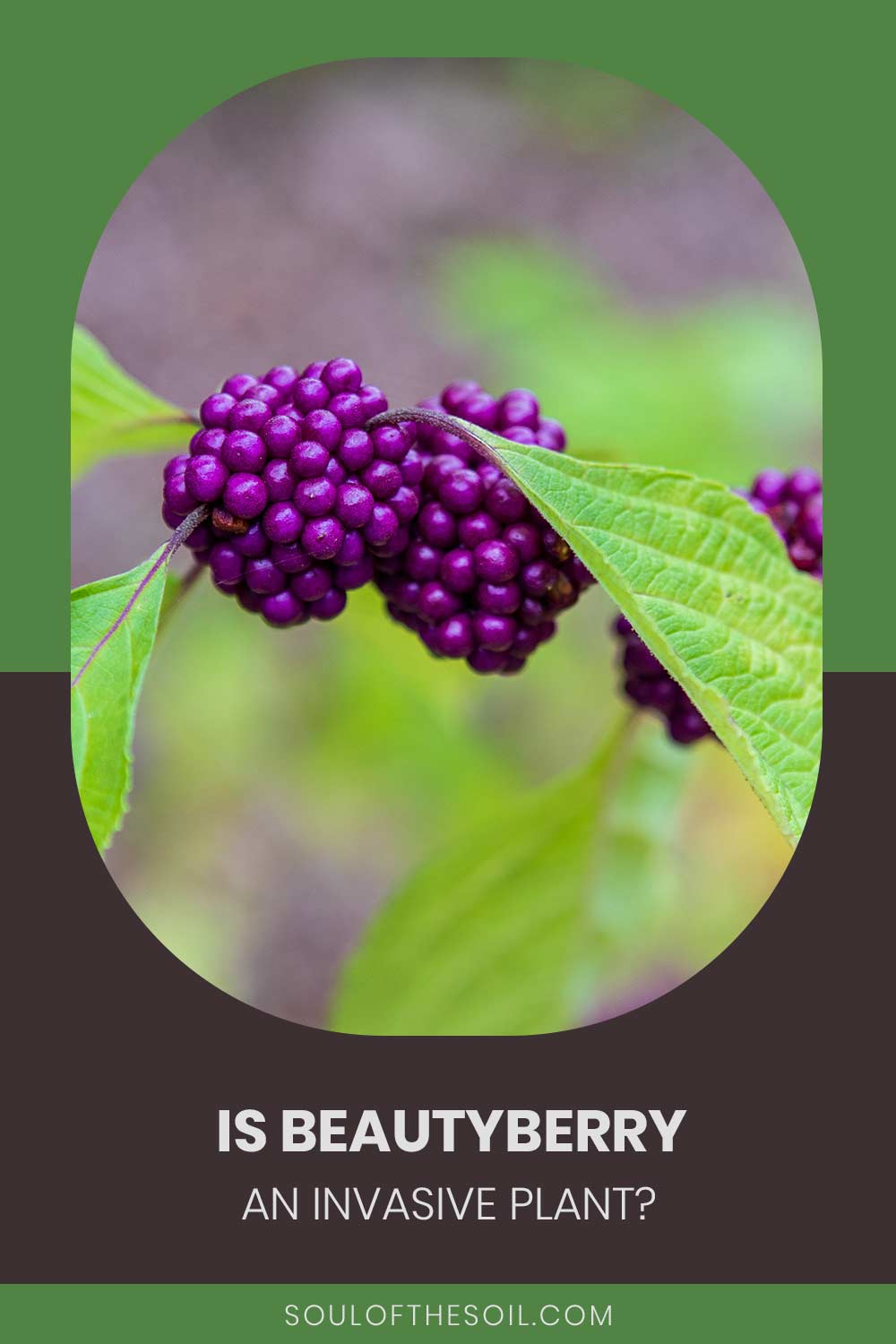Is Beautyberry an Invasive Plant?
We may earn commissions for purchases made through links on our site. Learn more on our about us page.
There will be varieties of this plant native to parts of Euro-Asia, the eastern coast countries of Asia, and the Southwestern states of the USA. The Callicarpa classified plants are known to grow in even the driest of soils and coldest of environments.
The Bodinier’s Beautyberry is native to the west-central portions of China. Still, being a more tolerant strain to the cold, this plant has found its way into the European fields and forests.
As far as being invasive, beautyberries are hardly a threat to other plant life but can survive in the harshest of cold conditions.

Are all Types of Beautyberries invasive?
As mentioned above, there will be specific ways this plant survives that will make it an effectively self-sustained organism.
As with most fruit-yielding plants, the seeds for the next generation will be tightly packed within the berries themselves. They will have invasive traits but nothing compared to weeds (like Dandelions).
To say that all types of Beautyberries are invasive would be an overreach. However, these plants are sturdy and can survive in some of the coldest weather in Europe.
Asia has to offer the Asian beautyberries considered invasive in certain areas.
Why is it Invasive?
An invasive species, by definition of National Geographic, is similar to this; an organism not indigenous or native to a particular area. Invasive species can cause significant economic and environmental harm to the new site.
The Bodinier and Purple Beautyberry are more invasive plants than the other two, and this is because as Bodinier’s plants started moving west into European areas, they took over and became even more cold-adapted.
The American species, Callicarpa Americana, and the Japanese Beautyberry (cultivated in gardens to honor the late Murasaki Shikibu in Japan) are considered non-invasive, as they prefer the warmer and wetter climates and stay where those climates are.
Can You Prevent it from Happening?
The American and Japanese varieties of beautyberries are easier to contain, as they prefer the humid, warm climates that are found in the southeast and southern portions of the United States, along with in specific regions within the Japanese islands.
However, the other species of beautyberries will need more containment management when keeping the plant within a particular boundary.
There will be a need for mitigation and berry extraction practices that keep the plant within the intended boundaries. This might be best done by growing the berries in the confined vineyard like gardens or greenhouses that prevent cross-pollination.
How Should You Plant it?
The beautyberries grow similarly to vines. They have long curly stems with broad leaves but purple berries (or cream color for some American species).
Therefore, making small cuttings during pruning will allow a gardener or farmer to create clones and control the growth of the plants.
As far as the Japanese beautyberries go, there is going to be an almost ceremonial approach needed to create the plants to honor the late Shikibu.
When taking care of the more invasive genus of beautyberries, plant them within a garden bed or greenhouse to prevent invasive spread and growth in the surrounding countryside.
Common Mistakes You need to Avoid
The most common mistake made for the American variety of beautyberries is to leave them exposed to the colder weather; they will inevitably wither and die off. The Bodinier’s and purple beauty berries will need a sturdy green hand to keep them in containment.
Common mistakes made when growing Asiatic beautyberries are allowing seeds to get out of garden beds and simple mishaps like eating a few berries and one falling to the ground will occur.
One out in the open, it is said that this fruit-yielding plant will take over any area, killing the surrounding native plant life.
Final Thoughts on Is Beautyberry an Invasive Plant
This is one of those plants that has evolved to be the opposites regarding preferred climate. For example, the American species prefers the humid lands of the United States’ southern and southeastern regions.
The Japanese species may only be able to live inside garden beds from this point. Still, the Bodinier’s and Purple beautyberry lineages were adaptive, allowing them to grow in some of the coldest and harshest environments.
One remarkable fact that separates the American Beautyberry from the rest is the variety that comes with cream-colored berries.



Leave a Reply
You must be logged in to post a comment.